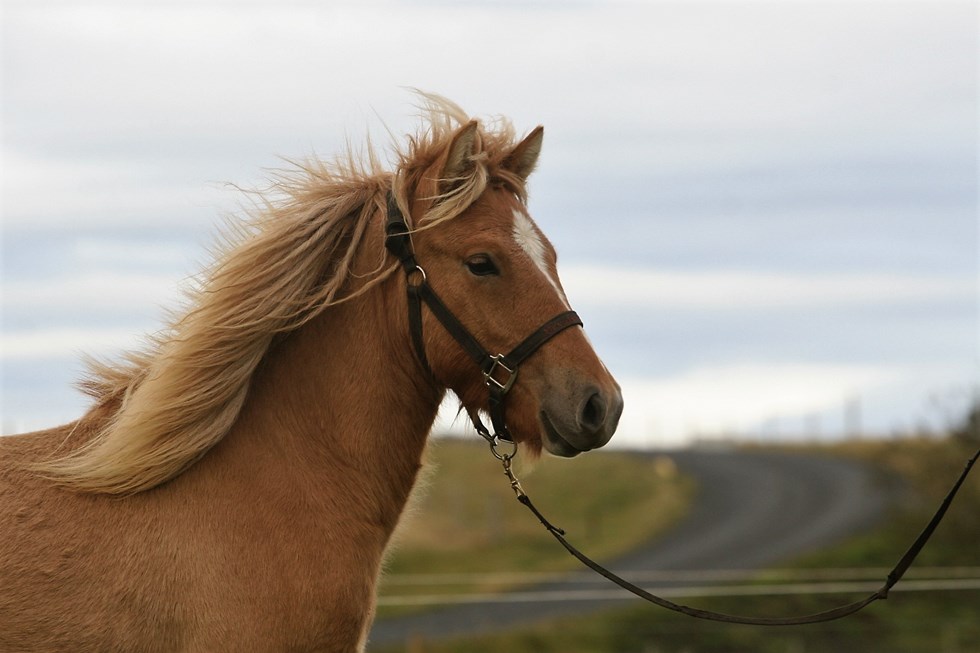

Handling and evaluation of youngsters
Magnús Lárusson has specialized in introducing and offering evaluation and handling of young horses aged 1 – 4 years. Handling horses at this age has two goals, one being to teach the horses ground manners and the other being to evaluate conformation, movements and temperament and comparing it to the breeding goal of the owner.
The handling and evaluation gives the owner of the horse important information on how the horse compares to expectations and breeding goals, and this knowledge makes decisions about the future of the horse involved easier to make.
The Handling
The youngsters are handled in a similar way as older horses that come in for training. We emphasize building respect and trust between horse and trainer. When that is accomplished the actual schooling can begin. Basic ground manners are emphasized and the following list shows what is commonly done at each age:
One year olds: Those horses first and foremost need to learn to trust the human being and respect. Then teaching them several simple, but necessary behaviors such as being caught, being lead and wearing a halter becomes easy. The important aspect gained through this process is that when the horse actually and really trusts the handler, then it will allow him to anything such as picking up feet, lead it into a trailer, and other common handling behaviors even though it has not specifically practiced them before.
Two year olds: Besides reviewing what was learned before, new things such as carrying a bridle and saddle are practiced. We emphasize working with the brain of the horse and not the muscles, i.e. the horse is learning, but not physically trained. The horse is too young for that at this age.
Three year olds: Of course we start with some review like before, and then we do more advanced bridle work. We expect the horse to be able to be lead in the bridle, and carry a saddle. If the horse is big and well developed, then we get on and teach the horse to be ridden to the left and to the right. This is done in a big box, and it is important that the rider is light, flexible and well balanced. If the horse is small compared to age, and lacking muscles then it is not advised to get on at this point.
The main difference between this handling and regular young horse training is the physical aspect. At this young age, the horse is ready for some learning, but not for physical training. For that it needs more muscle, bone and tendon growth and development before that is advisable.
Horses that have gone through this process are very well prepared for the actual starting process when it begins. They are usually ready to be ridden, and of course the important part, nothing should be of big surprise since the owner now knows what to expect from his/her horse. The probability of having raised a low quality horse for several years with appropriate cost, thinking it would be a high quality horse, is very low. This can save a lot of money and disappointments.
The Evaluation
_250_188.jpg) Evaluating youngsters gives good predictions about what to expect from them at a grown up age for conformation, movements and temperament.
Evaluating youngsters gives good predictions about what to expect from them at a grown up age for conformation, movements and temperament.
Evaluating temperament
The evaluation process takes place during the handling. Then the handler gets to know the horse, and can evaluate how brave or fearful the horse is, or how calm or hot the disposition is. Even though the handling moves the horses towards being “appropriately brave and hot/calm”, then it is important to know what the natural character is like. That is (at least in the case for breeding horses) what is passed on to the next generation. Another important aspect of the temperament evaluated is how fast the horse learns.
Evaluating conformation
It is possible to predict the conformation for a grown up horse at the time when it is still a foal. The reliability of this prediction becomes higher as the horse is older of course, but this prediction can still be a valuable knowledge right at the time when the horse is a foal. Some things can be evaluated with higher reliability than others, but detailed knowledge of the growth physiology of the horse makes us capable to evaluate young horses for conformation at least to certain extent right from the time they are born.
Evaluating movements
There are several things to watch about how a youngster moves. We want to see movements characterized by high leg action, long strides, lightness and flexibility. Of course we want the horse also to show us both tolt and trot and some breeders like to see pace. The important part is to compare the horse to the breeding goal of the owner
Magnús is a licensed international breeding judge for Icelandic horses and has a long experience in judging horses at all ages. Please contact us if you want an evaluation of your young horse.